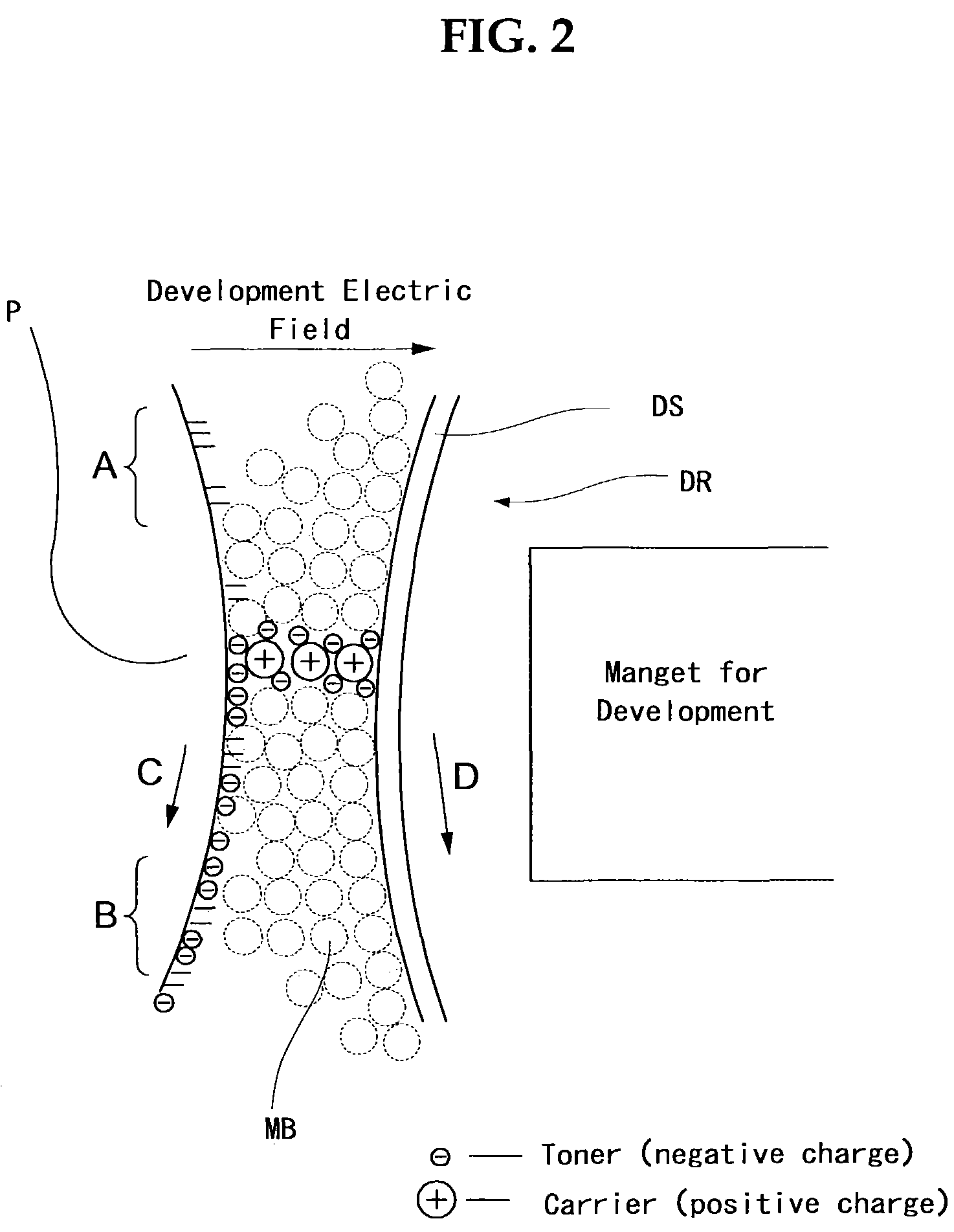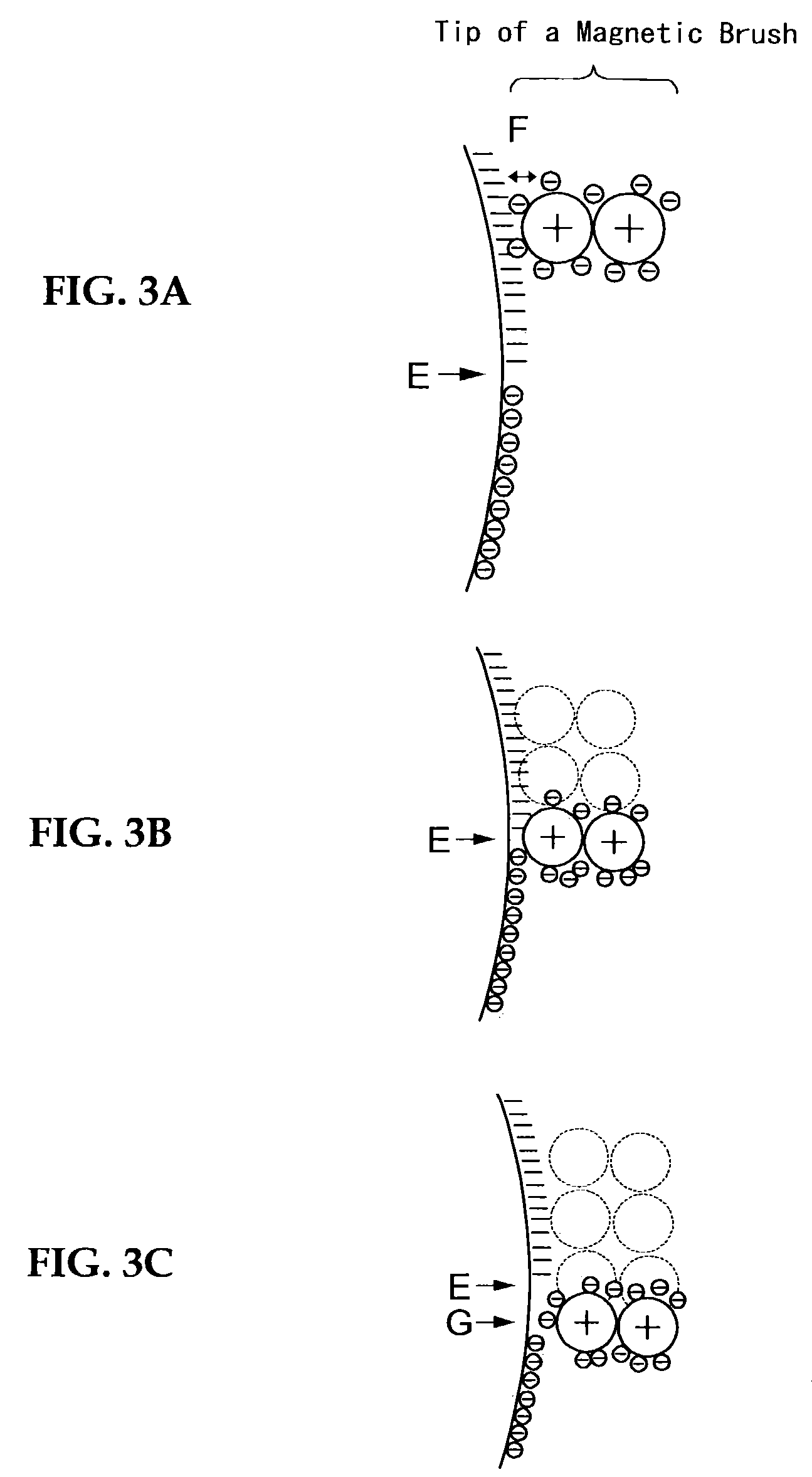Toner for developing latent electrostatic image, container having the same, developer using the same, process for developing using the same, image-forming process using the same, image-forming apparatus using the same, and image-forming process cartridge using the same
a technology for developing electrostatic images and toners, which is applied in the direction of electrographic processes, electrographic processes, and electrographic processes using charge patterns, etc. it can solve the problems of excessive amount of toners melted and stuck to the heating roller, poor image fixing, and hot offset, etc., to achieve excellent powder fluidity, excellent heat storage properties, and excellent powder fluidity
- Summary
- Abstract
- Description
- Claims
- Application Information
AI Technical Summary
Benefits of technology
Problems solved by technology
Method used
Image
Examples
example a-1
(Synthesis of Binder Resin)
[0194]724 parts of bisphenol A ethylene oxide dimolar adduct, 276 parts of isophthalic acid and 2 parts of dibutyl tin oxide were introduced into a reaction vessel equipped with a condenser, stirrer and nitrogen inlet tube, were reacted under normal pressure at 230° C. for 8 hours, were reacted again under a reduced pressure of 10–15 mmHg for 5 hours and cooled to 160° C., then 32 parts of phthalic anhydride was added and the reaction was continued for 2 hours. Next, the reaction mixture was cooled to 80° C., and 188 parts of isohorone diisocyanate was added in ethyl acetate and reacted for 2 hours to obtain a prepolymer (1) containing isocyanate. Next, 267 parts of the prepolymer (1) and 14 parts of isohorone diamine were reacted at 50° C. for 2 hours to obtain a urea-modified polyester resin (1) having a weight average molecular weight of 64000. In an identical manner to that of the above, 724 parts of bisphenol A ethylene oxide dimolar adduct and 276 pa...
example a-2
(Synthesis of Binder Resin)
[0196]In an identical manner to that of Example A-1, 334 parts of bisphenol A ethylene oxide bimolar adduct, 274 parts of isophthalic acid and 20 parts of anhydrous trimellitic acid were condensation polymerized, and reacted with 154 parts of isohorone diisocyanate to obtain a prepolymer (2). Next, 213 parts of the prepolymer (2), 9.5 parts of isohorone diamine and 0.5 parts of dibutylamine were reacted in the same way as that of Example A-1 to obtain a urea-modified polyester resin (2) having a weight average molecular weight of 79000. 200 parts of the urea-modified polyester resin (2) and 800 parts of the non-modified polyester resin (a) were dissolved in 2000 parts of ethyl acetate / MEK (1 / 1) mixed solvent, and stirred to obtain an ethyl acetate of the binder resin (2). This was dried under partial reduced pressure to isolate the binder resin (2). The peak molecular weight was 5000, Tg was 62° C. and the acid value was 10.
(Toner Preparation)
[0197]The ide...
example a-3
(Binder Resin Synthesis)
[0198]30 parts of the urea-modified polyester resin (1) and 970 parts of the non-modified polyester resin (a) were dissolved in 2000 parts of ethyl acetate / MEK (1 / 1) mixed solvent, and stirred to obtain an ethyl acetate / MEK solution of the binder resin (3). This was dried under partial reduced pressure to isolate the binder resin (3). The peak molecular weight was 5000, Tg was 62° C. and the acid value was 10.
(Preparation of Toner)
[0199]The toner (3) of the present invention was obtained in an identical manner to that of Example A-2, except that the binder resin (2) was replaced by the binder resin (3), and the coloring agent was changed to 8 parts of carbon black. The volume average particle diameter (Dv) of the base of toner particle was 6.82 μm, the number average particle diameter (Dn) of the base of toner particle was 6.11 μm, and the ratio (Dv / Dn) was 1.12. Other detailed conditions and test results are shown in Tables 3 and 4.
PUM
| Property | Measurement | Unit |
|---|---|---|
| particle diameter | aaaaa | aaaaa |
| particle diameter | aaaaa | aaaaa |
| Tg | aaaaa | aaaaa |
Abstract
Description
Claims
Application Information
 Login to View More
Login to View More - R&D
- Intellectual Property
- Life Sciences
- Materials
- Tech Scout
- Unparalleled Data Quality
- Higher Quality Content
- 60% Fewer Hallucinations
Browse by: Latest US Patents, China's latest patents, Technical Efficacy Thesaurus, Application Domain, Technology Topic, Popular Technical Reports.
© 2025 PatSnap. All rights reserved.Legal|Privacy policy|Modern Slavery Act Transparency Statement|Sitemap|About US| Contact US: help@patsnap.com



